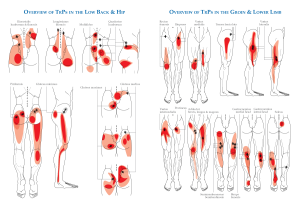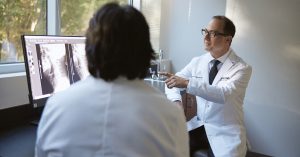How to Manage Lower Back Pain

Lower back pain is one of the most common causes of disability worldwide. It can limit your ability to work, take care of yourself and others, and enjoy life to the fullest. has a number of different causes, including lumbar . Fortunately, this frustrating condition has many treatment options available to improve pain and mobility.
The Lumbar Spine
The lumbar spine, located in the lower back, consists of five spinal bones, or vertebrae. These vertebrae are the largest and strongest in the spinal column and bear the most weight. The lumbar spine is responsible for much of your lower back’s movement, flexibility, and strength.
Between each vertebra lies an intervertebral disc, which acts like a cushion, absorbing shocks and allowing the vertebrae to move smoothly against each other.
The lumbar region also contains spinal nerves that branch out from the spinal cord and travel to various parts of the lower body. These nerves transmit signals that control movement and sensation in your legs and feet.
What is Lumbar Spondylosis?
Lumbar spondylosis refers to the age-related wear and tear that occurs in the vertebrae and intervertebral discs of the lower back. These changes are a natural part of aging. While most people experience some level of spinal degeneration as they age, not everyone will develop symptoms or experience pain.
In lumbar spondylosis, the discs that cushion the vertebrae start to break down, losing their ability to absorb pressure and maintain space between the bones of the spine. When this happens, the protruding disc may press against nearby spinal nerves, causing a condition known as sciatica.
As the degeneration progresses, small, bony growths, called bone spurs, may form along the edges of the vertebrae. These bone spurs can also press against spinal nerves, leading to symptoms like:
- Weakness
- Numbness
- Tingling in the legs
In more severe cases, if the bone spurs compress the spinal cord, you may experience:
- Difficulties with walking
- Problems with bladder and bowel control
In advanced stages of lumbar spondylosis, the intervertebral discs can deteriorate completely. This leaves little to no space between the vertebrae and may result in:
- Significant pain
- Limited movement
- Potential nerve damage
Management Options for Lumbar Spondylosis
Treatment depends on the severity of your symptoms and how much the condition affects your daily life. While the degenerative changes in your spine can’t be reversed, there are several strategies you can use to manage pain. For many, conservative treatments are effective, including:
- Nonsteroidal anti-inflammatory drugs (NSAIDs) or pain relievers to help reduce pain and inflammation
- Applying heat or ice to the affected area
- that strengthen your back muscles and improve flexibility
For advanced lumbar spondylosis, if conservative treatments aren’t providing enough relief, your doctor may recommend surgery.
One surgical option is . This procedure involves removing the damaged disc between two vertebrae and joining or fusing the bones to stop movement in that area. By stabilizing the spine, spinal fusion can help reduce pain, improve your mobility, and prevent further damage.
Managing Lumbar Spondylosis
If you’re diagnosed with lumbar spondylosis, it’s important to follow your treatment plan and stay active within your comfort level.
Below are several steps you can take:
- Engage in low-impact exercises like walking or swimming to keep your spine flexible and strong.
- Sit, stand, and lift with proper posture to reduce strain on your lower back.
- Incorporate stretches and core-strengthening exercises to support your spine.
- Maintain a healthy weight and eat a balanced diet rich in anti-inflammatory foods.
- Have regular check-ups with your doctor and take quick action on new or worsening symptoms.
And remember, if you experience new or worsening symptoms, such as increased pain, weakness, or changes in bladder or bowel function, be sure to contact your doctor right away to avoid complications.
Don’t continue to live with lumbar spondylosis – today!




